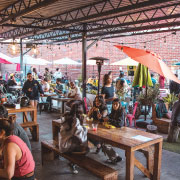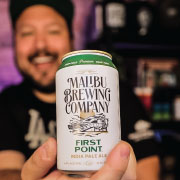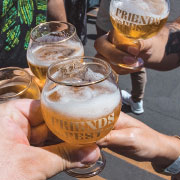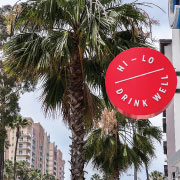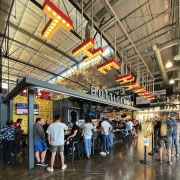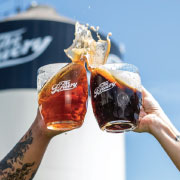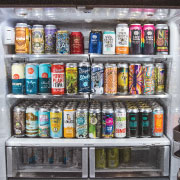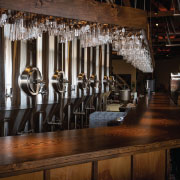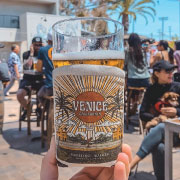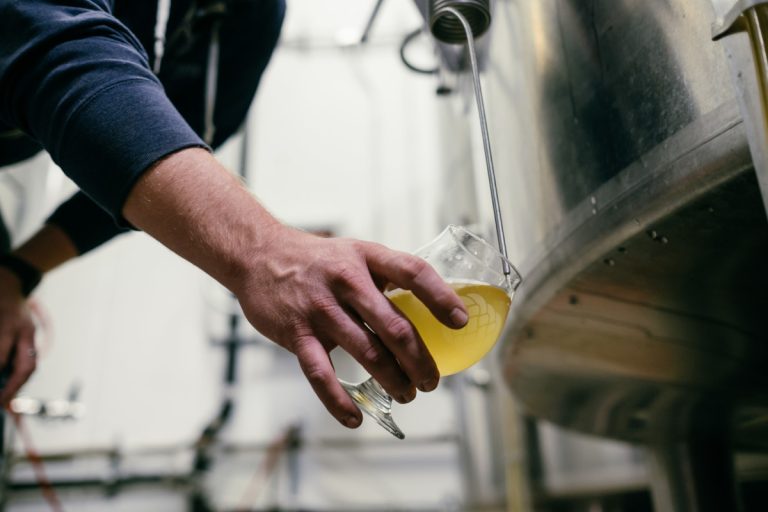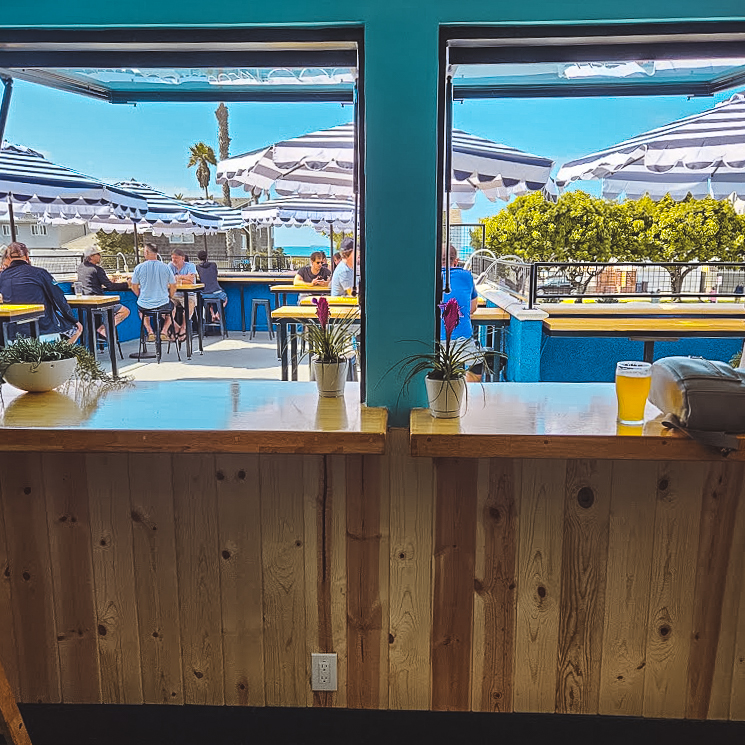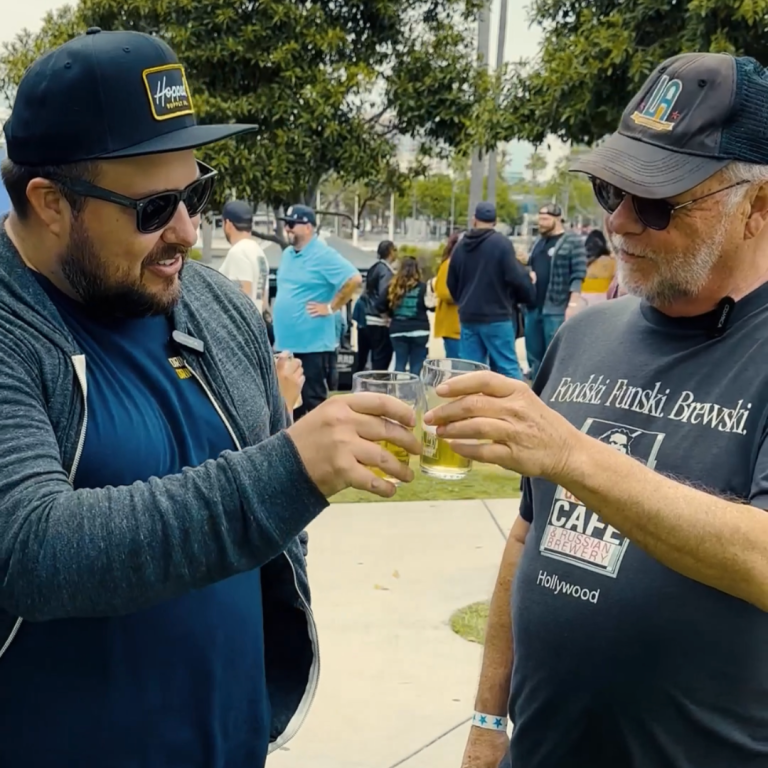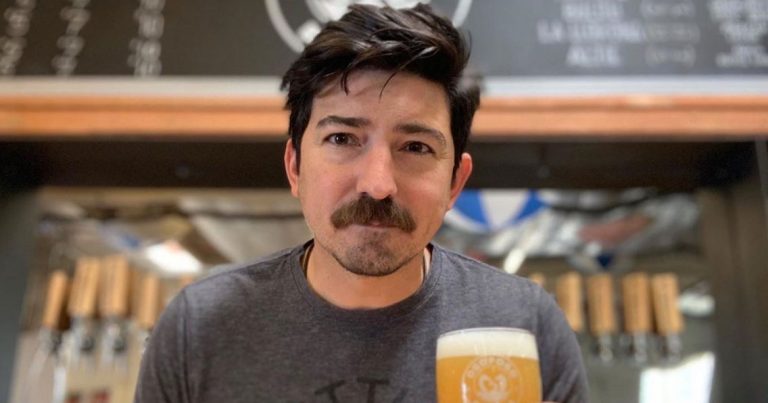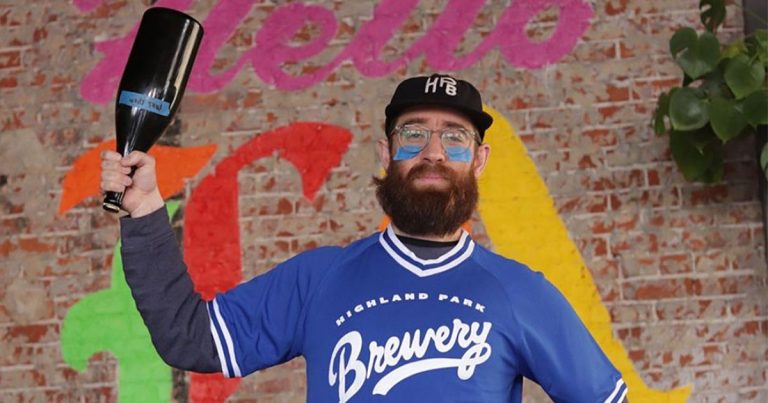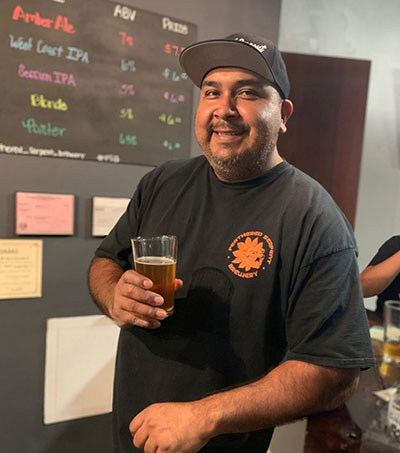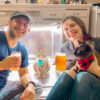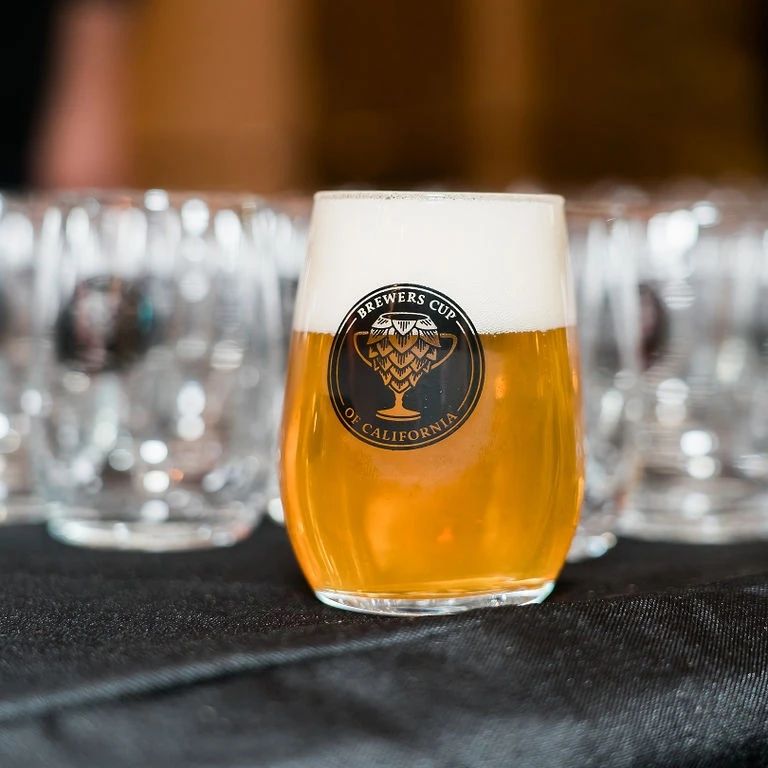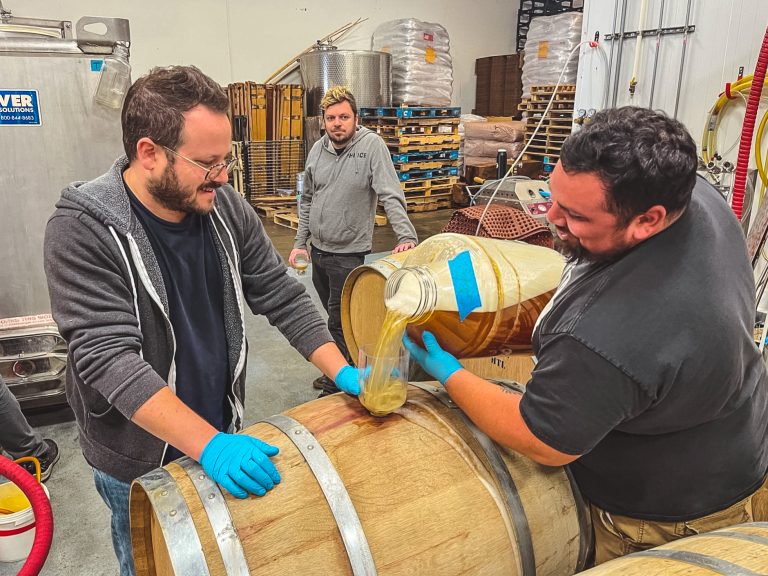Levi Fried is a mad scientist of craft beer.
When the Long Beach native left the shores of Southern California just over a decade ago to attend medical school in Israel, Fried knew there wouldn’t be many IPAs for him to imbibe in, so he decided to set himself up to homebrew overseas. Once he became a doctor, his love of beer didn’t subside, but his frustration with the amount of bureaucracy in the medical field did. The result was a return to his hometown, where he blended his passions for craft beer and science into brews accessible to everyone with the 2017 opening of the Long Beach Beer Lab in the port city’s Wrigley neighborhood.
While the coronavirus pandemic has upended his brewery, as it has every other small business across America and the world, it hasn’t knocked down Fried’s drive nor his belief in providing quality goods to his local patrons. If he could prescribe the world a good dose of hops and grains, we’re pretty sure he would, but since that’s not exactly sound medical advice, we’ve taken it upon ourselves to imbibe in both for the sake of our souls.
Hopped LA chatted with Fried a few weeks in to the “Safer at Home” orders taking hold of Los Angeles County. While things have opened up since, cases are back on the rise, and there’s a very good chance that round two of (as we like to call it) Keep Your Butt at Home and Wear a Damn Mask will be here any day now. With that in mind, our very unofficial doctors orders are for you to learn more about how Fried’s love of beer came to be and how his unique background is helping LBBC pivot into a temporary bodega amid the coronavirus outbreak. We would also never stop you from studying up while sipping on one of his stellar IPAs and maybe listening to some reggae, if you really want to get in the Fried freestyle groove.
Emily Krauser: How did you first get into beer on a professional level?
Levi Fried: I’ve always been brewing with my wife and business partner [Harmony Sage], and we’ve always created delicious things. She’s a pro chef and baker by trade, and I’m mostly a doctor and chemist by trade, so it was really fun to mix the biology and art of food and baking. When we figured out that brewing was so easy at home for home brewing, we loved to do that, to try new flavors and drinks. We’ve always been beer drinkers in our house. When I got accepted to medical school in Israel, we set ourselves up to brew beer while we were students over there, and we have been brewing ever since. When we wanted to open up professionally, we looked [in Israel] and it just didn’t pan out financially for us. We did have a small, three-barrel system out in our garage in Israel, and we kind of made a membership club and were selling growlers, but I’m from Long Beach and Harmony is from the Valley, so we decided to move back to California and go to the land of IPAs.
EK: Loving beer is one thing, but transitioning from medical school to launching a brewery is a very different trajectory. What led you to make that major switch?
LF: It wasn’t overnight. It was a long discussion about if we wanted to change the trajectory of our lives. Ultimately, I was getting fed up with a lot of the bureaucracy of clinical life and I wanted to do more of the research stuff. That’s why we’re the Beer Lab — we can continue to do research, and that’s why we do beers that are a little bit off-kilter, a little bit out there. It’s backed by research and science, and we’ve solidified ourselves with some universities and yeast labs in developing programs. Then at the same time, Harmony just wrote a book on yeast and has established our baking side of the program into a formidable leader in sourdough, yeast, and flour. So, we still have held onto our art and science roots. Instead of just being a distribution brewery depending on label art and hype to back our liquid, we’re trying to pick people’s brains.
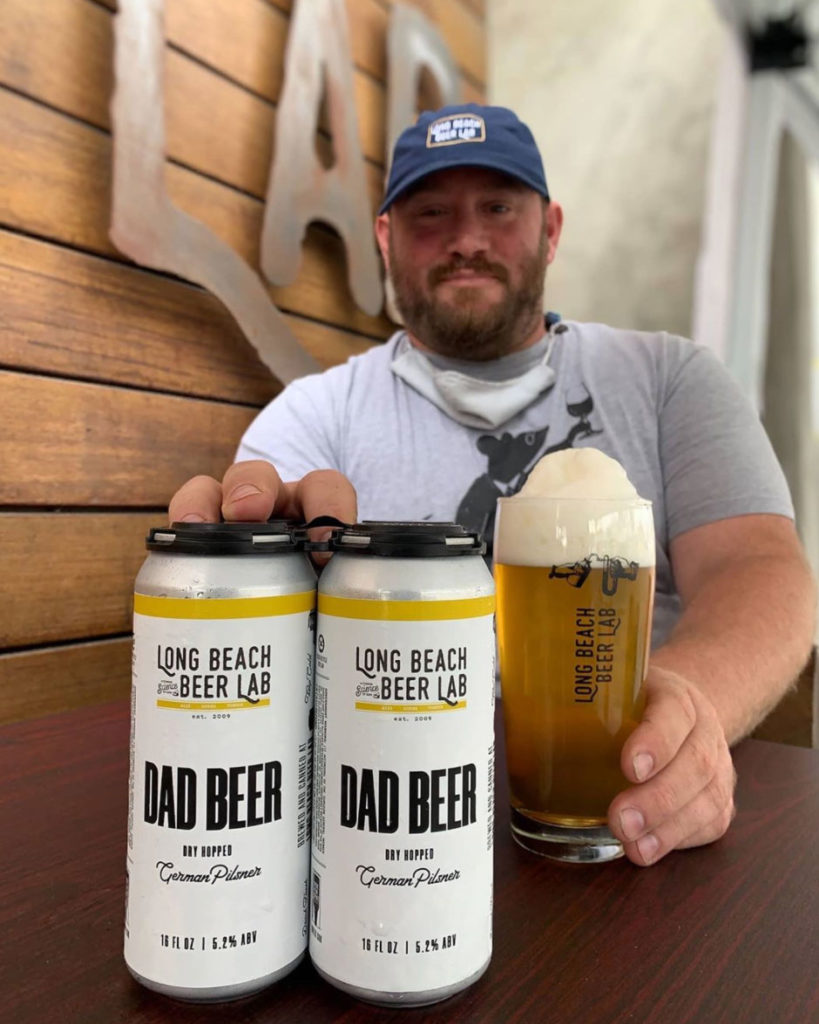
EK: What’s the best part about bringing experimental beer vibes to your hometown?
LF: Long Beach loves Long Beach, and they love to support their own. Right off the bat, just being from here and having that community support and entrenchment has been very helpful on almost a superficial level of just the geographic location. But I do believe Long Beach has this dichotomy of industrial labor, artistic nuances, and a gritty nature which I think really embraced this level of brewing. People love to go and get a dry-hopped pilsner or a nice blonde ale but will maybe also get a mix 4-pack or try a can a little out of their comfort zone, and I find that Long Beach embraces both of those things. We can sit and produce IPAs and blonde ales but at the same time produce barrel-aged wild ales and sell them in the same kind of platform, and I think that has been really great for Long Beach. It’s kind of built into the DNA and the fabric of the people of the city — we’re not Orange County, we’re not L.A., we’re kind of in this middle ground… People are port workers; the industries are revolved around the port. There are more hands-on industries in Long Beach like metalworking and petroleum and gas distillation, and I think it breeds a very kind of humble, salt-of-the-earth type of person who lives here.
EK: Is there one beer you’re most proud of having brewed since opening Long Beach Beer Lab?
LF: Oh, man, there’s so many. I think we have over 200 beers that we’ve brewed since we’ve opened up. I love IPAs, I really do. The West Coast-style really is one of my favorites, and I like dry-hop pilsners and am really getting into lagers. I appreciate sours more on an academic level. I like to drink them and taste them, but I don’t have a pint of them. I’ve more enamored by their complexity than I am with the facility of them. There’s a social kind of facility of drinking beer, where you could have a pint and pass time with friends and talk, and I don’t find that sours fulfill that. I think for some people they do, but not for me. We do brew this kveik seven-day IPA called LB 420. We released a new one right before the Passover break, and we’ve been selling it like crazy, and I’m really enjoyed both the academic facility of it and just the possibility of drinking that beer right now, because it drinks like a West Coast IPA, but it’s a little bit more tropical and hop aroma-forward. And on top of all of that, we’re using these hot fermenting, hot conditioning environments using kveik yeast, so it’s also picking more of that scientific brain of ours, and we’ve had to learn new techniques and cellaring abilities to hone that yeast in and bring that beer to where we want it. It was phenomenal, and I’m so happy every time it gets better. Each time, we’re tweaking pitching rates and nutrient dosing and water chemistry just to dial this essentially farmhouse yeast into a West Coast or New England-style beer, and I think we nailed it.
EK: I have seen that yeast everywhere in the past year or so, and I don’t think I had heard it mentioned once even in like 2018.
LF: I think that’s a problem with breweries and that’s due to the fact that they’re not focusing on the science. They’re focusing on the marketing, the labels, and they’re not saying, ‘Hey, here’s the new yeast.’ Let’s celebrate a new tool in the arsenal of brewing when there’s not a lot of tools. For the most part, it’s water, hops, yeast, and barley, so I think it’s pretty cool that we try and embrace it. [The typical beer drinker] doesn’t think about the science, and I think you don’t need to, but it’d be nice to know. There are a million ways to drink a beer, and it’s nice to hit on all of those stats.
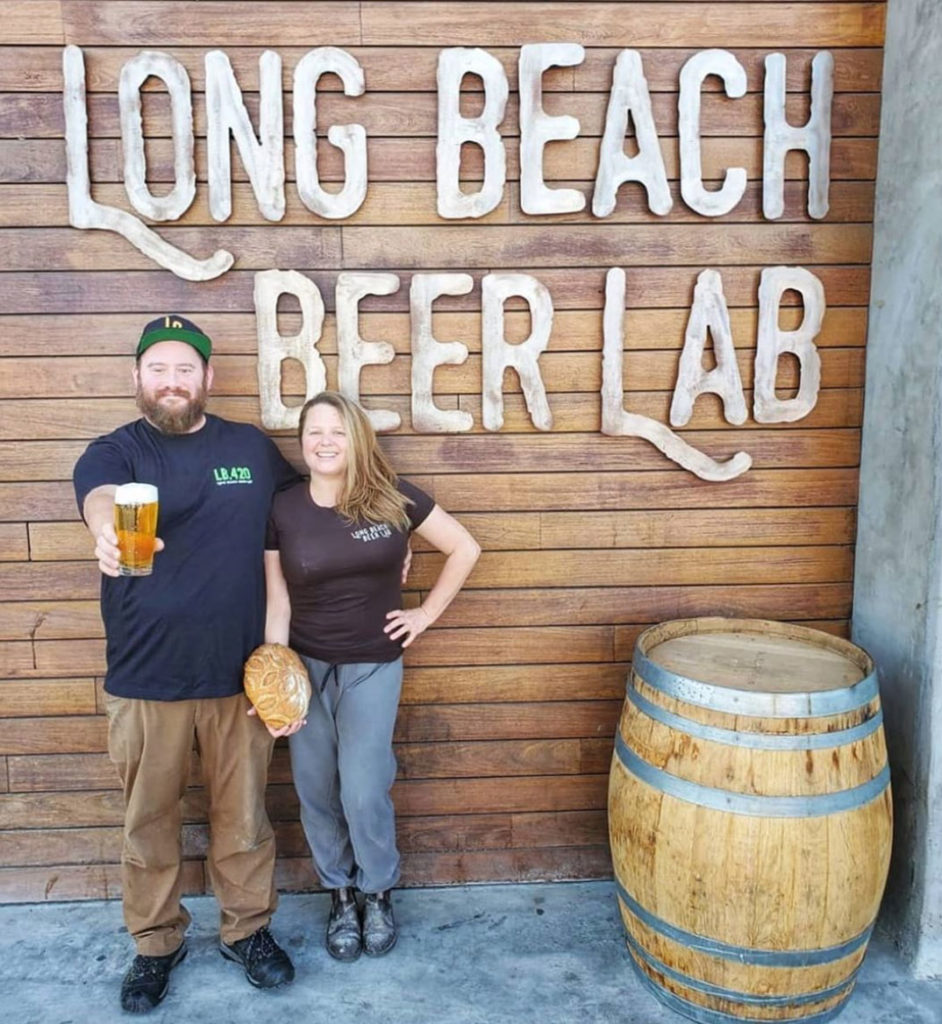
EK: You and Harmony run your businesses — the brewery and the bakery — in the same building and they work in, well, harmony together. Why it is this kinship so important, beyond just the personal level of your relationship?
LF: Typically when you say, ‘I’m working with my wife,’ people are like, ‘Ohhhh, how’s that going?’ A lot of people have to defend their stance on working with their spouse, and I would rephrase what we do because essentially and legally, we run two separate licenses and businesses. Even though we collaborate on both, I like to say I work alongside her, and then we collaborate on more of the facilities and structural parts of the businesses. We are the main producers, so that enables us to focus and concentrate on beer for me and bread and pastries for her and for us to collaborate more on the delivery of those items. We basically operate our respective departments knowing that the other person has it, that they’ve got this, and then we’ll sit back and take a broader view on the direction of the company and the direction of things that we want to do together. Like, we did a 420 basket, where we put the LB420 and a bunch of cookies with pot leaves on them together, so we were able to collaborate on more of the branding side of it. We come out more successful that way and also, we’re not going to be butting heads constantly as any two people would do no matter what. Most of the time, we come out more collaborative, as in, ‘Oh, that’s awesome, you’re doing this and I’m doing this,’ or ‘Hey, I’m making a beer with sweet potato and ube, can you make an ube muffin?’ I think that’s more exciting. Also, when we’re trying out new breads and talking about the sciences behind them or when we’re making new beers and we want to use seasonal fruits, we collaborate with the kitchen, so it’s a lot more of a collaborative environment just because of having the two businesses. Sometimes it’s equally as fine to just put my head in the malt and the grain and Harmony put her hands in some dough and just sit there and do the work. That’s also okay.
